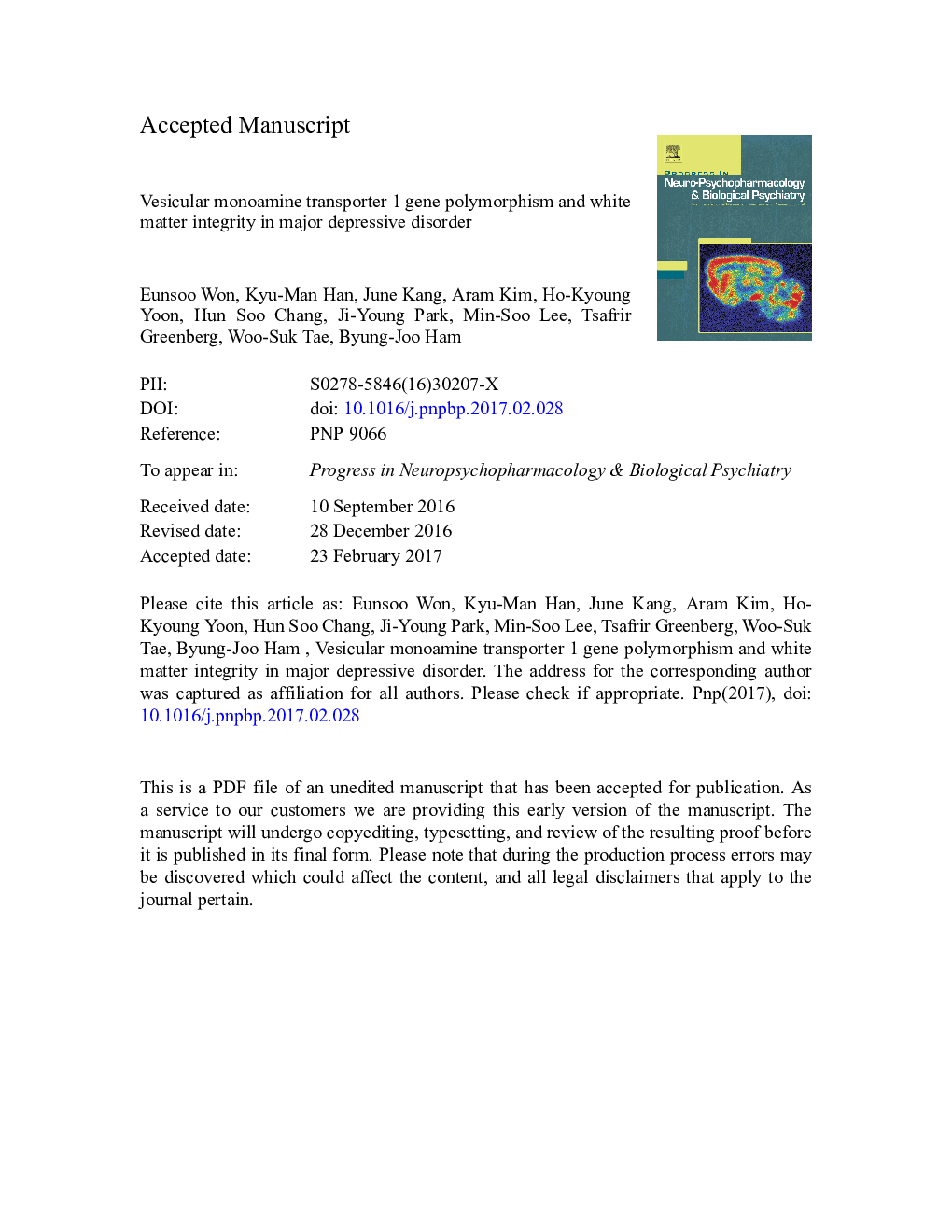| Article ID | Journal | Published Year | Pages | File Type |
|---|---|---|---|---|
| 5558053 | Progress in Neuro-Psychopharmacology and Biological Psychiatry | 2017 | 32 Pages |
Abstract
The genetic variant of the vesicular monoamine transporter 1 gene (VMAT1) has been suggested to be associated with monoaminergic signaling and neural circuit activity related to emotion processing. We aimed to investigate microstructural changes in white matter tracts of patients with major depressive disorder (MDD), and examined the interaction effect between VMAT1 Thr136Ile (rs1390938) polymorphism and MDD on white matter integrity. Diffusion tensor imaging (DTI) and VMAT1 Thr136Ile (rs1390938) genotyping were performed on 103 patients diagnosed with MDD and 83 healthy control participants. DTI was used to investigate microstructural changes in white matter tracts in patients compared to healthy controls. The possible interaction effect between rs1390938 and MDD on white matter integrity was also assessed. Patients with MDD exhibited lower fractional anisotropy (FA) values of the forceps major (p < 0.001), forceps minor (p = 0.001), inferior longitudinal fasciculus (left: p = 0.001; right: p < 0.001), parietal endings of the superior longitudinal fasciculus (left: p < 0.001; right: p = 0.002), left temporal endings of the superior longitudinal fasciculus (p = 0.001), and right uncinate fasciculus (p = 0.001). Significant genotype-by-diagnosis interaction effects were observed on FA values of the right uncinate fasciculus (p = 0.001), with A-allele carrier patients exhibiting lower FA values compared to G-allele homozygous patients (p = 0.003). No significant differences in FA values were observed between genotype subgroups among healthy controls. Our results may contribute to the evidence indicating an association between the VMAT1 gene and structural brain alterations in depression.
Keywords
Related Topics
Life Sciences
Neuroscience
Biological Psychiatry
Authors
Eunsoo Won, Kyu-Man Han, June Kang, Aram Kim, Ho-Kyoung Yoon, Hun Soo Chang, Ji-Young Park, Min-Soo Lee, Tsafrir Greenberg, Woo-Suk Tae, Byung-Joo Ham,
